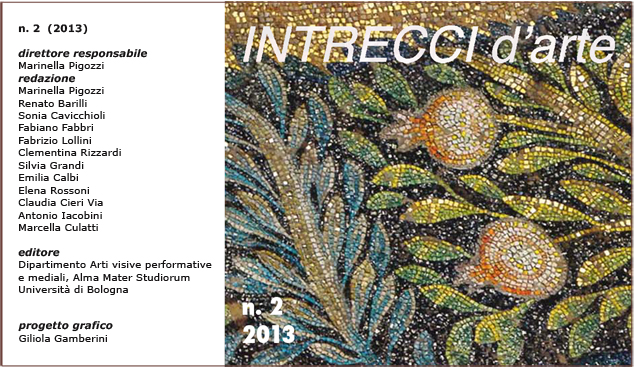Ravenna and the Near East: wall mosaics between Vth and VIth centuries
DOI:
https://doi.org/10.6092/issn.2240-7251/3965Keywords:
Ravenna, mosaicsAbstract
As a bridge between East and West, the city of Ravenna, in fifth and sixth centuries, thanks to the wall mosaics of religious buildings, emerges among the main centers of the empire. This is why Ravenna mosaic art fits perfectly into a cultural and artistic koinè that, by parallel historical and political events, has Mediterranean Sea as a common denominator, epicenter of an articulated system of civilization that for centuries has collected and melted harmoniously cultures of heterogeneous people.
With the gradual decline of Rome, a center of development and fertile meeting ground of new cultures became Constantinople, from which Ravenna, three times capital since 402, acquired cosmopolitan characteristics, assimilating and elaborating ideological and cultural contributions. In addition to the undoubted, but not unique, Constantinopolitan influences on the Adriatic city, through the analysis of wall mosaic decorations, it is possible to draw a common thread that ties the last capital of the Western Empire to the centers of the Near East, particularly to the Greek, Cypriot and Syrian areas, in relation to the historical context and to the main iconographical, iconological, stylistic, technical and material elements, pointing out, although heterogeneity, some salient similarities. Decorative programs appear related to dogmatic purposes that go beyond the territorial peculiarities of each center. In this background, mosaic emerges as the most effective means of communication to express, with simplicity and splendor at the same time, the concepts of the divine world and the imperial power, strongly united, following the current ideology, in close connection with the monumental context.Downloads
Published
How to Cite
Issue
Section
License
Copyright (c) 2013 Letizia Sotira
The copyrights of all the texts on this journal belong to the respective authors without restrictions.
This journal is licensed under a Creative Commons Attribution 4.0 International License (full legal code).
See also our Open Access Policy.
Images and photographs may have different terms of license.
In making material available online the Journal acts in good faith. Parties who have questions or who wish to contest the use of specific works may contact the Editor in chief.
Metadata
All the metadata of the published material is released in the public domain and may be used by anyone free of charge. This includes references.
Metadata — including references — may be re-used in any medium without prior permission for both not-for-profit and for-profit purposes. We kindly ask users to provide a link to the original metadata record.






